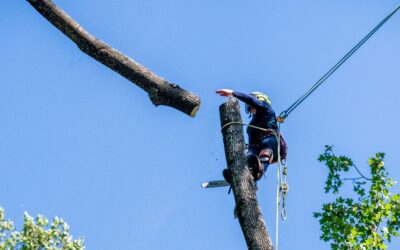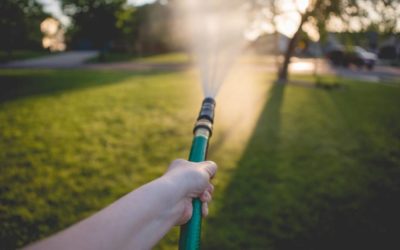Blog Topics
Landscape drainage isn’t something you probably think much about – until your basement floods, the lawn turns into a swamp, or your new landscape plants start to die. If you notice standing water on your property after a rainfall, if your yard slopes towards your home, or you have low spots in the lawn, proper drainage is critical to prevent damage to your home, landscaping, and hardscape areas.
In this article, we show you how to prevent damage, costly repairs, and headaches caused by landscape drainage and stormwater issues in northern Virginia.
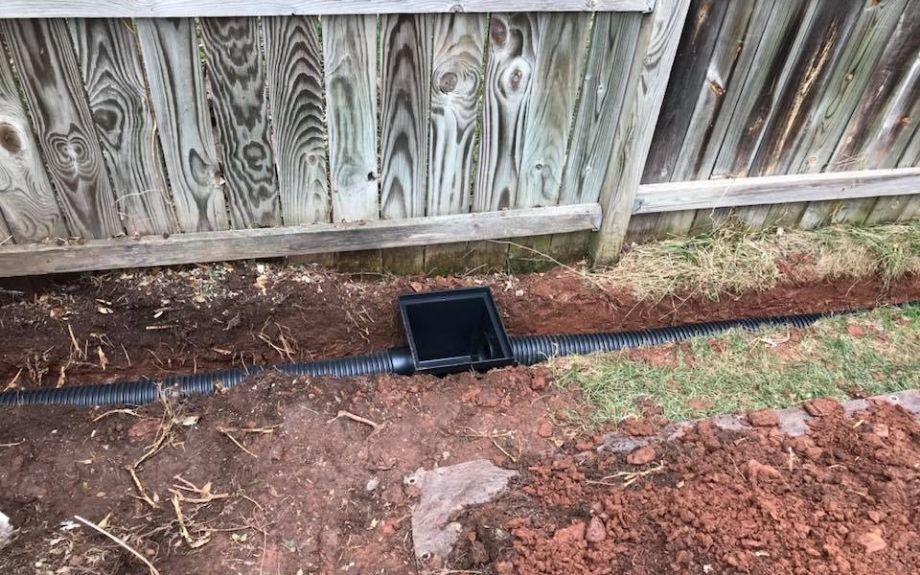
Why Drainage is Important – Even if You’ve Never Had Issues with Flooding
Just because you haven’t had a problem with flooding or standing water before doesn’t mean that you never will. Even seemingly small changes can have a big impact on how water “behaves” on your property.
For example, drainage problems can start immediately after you’ve made changes to your landscaping. Among the most common reasons homeowners in our area find they have standing water or sodden soil are:
- A new walkway
- A new patio or driveway
- New planting areas that are mounded up, lowered or surrounded by hardscaping
- New lawns
- A home addition
A change in rainfall patterns can also cause you to suddenly have a drainage problem. A light sprinkling of rain won’t cause damage, but a heavy downpour can. If rainfall is regular, heavy, and storms last a long time, the amount of water falling on your landscape can cause flooding.
Even small changes can create drainage problems. This is because, as we all know, water runs downhill.
All water, whether it’s from an irrigation system or natural rainfall, will run to the lowest point it can find. Whether that point is in your lawn or in the center of your new patio, you’ll find water collecting there. And if the low point is against your home’s foundation, you may find water entering your basement.
Common Areas That Cause Landscape Drainage Issues
Roof downspouts are common sources of drainage problems. If your downspouts are not connected to an underground drainage system, make sure they send water to areas that readily drain. Otherwise, you’ll find water pooling after a rainstorm that could flood low areas or reach your home’s interior.
Low spots in lawns, driveways, patios, and sidewalks. When there’s nowhere for the water to run to, it starts pooling, especially on surfaces that don’t absorb much water. When water collects in places where people walk or park their cars, it can become a safety hazard.
How much water collects at a low spot and how fast it accumulates is determined by several things, including:
- How big an area is draining water to the low point
- How much of that water is absorbed along the way, and
- How much water drains at one time.
Soil or hardscape surfaces that tilt toward your house. When you design an exterior landscape area, sending water away from a house (or any structure) is the first thing to do. This is because proper grading is an essential part of landscape design, as well as a health and safety issue.
WHAT IS LANDSCAPE GRADING? Landscape grading includes designing the slopes, or angles, of all surfaces to drain to predetermined points. These points may be low spots that drain naturally, or they may be gutters or drain inlets that connect to a larger storm sewer system. >> Learn more
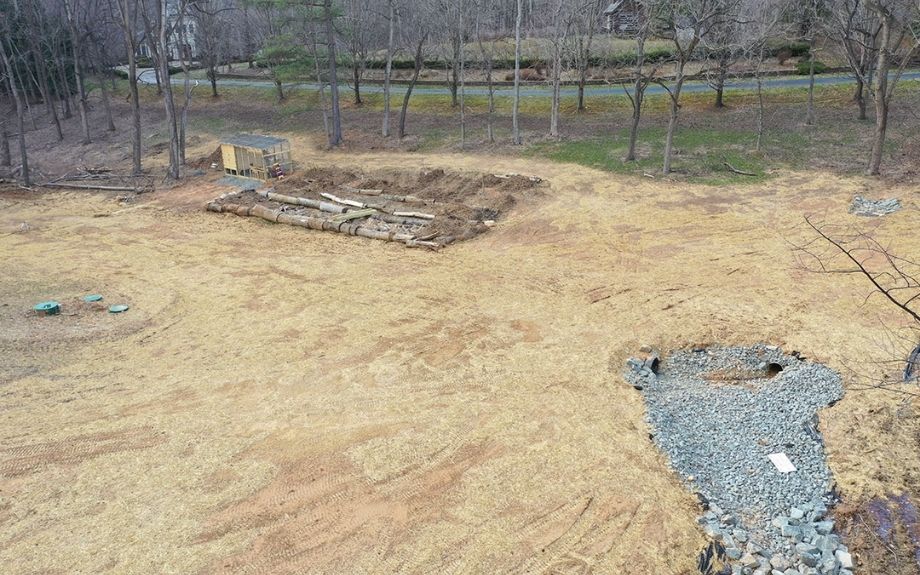
When to Have Your Yard Examined for Stormwater Drainage Issues
While pooling or standing water is usually easy to spot, it doesn’t necessarily cause immediate damage. And the long-term damage it causes isn’t always obvious. As a result, many people put off having the problem investigated by a landscape drainage professional. But delaying an inspection isn’t a good idea. It’s far better to address any water problems right away than it is to deal with the cost and disruption of fixing the damage!
As soon as you see or suspect that you have a drainage issue
Maybe you’ve noticed water collecting where it didn’t previously, or your lawn is squishy when you walk on it. Don’t assume that it’s a one-time issue or that the problem will resolve itself in time. It’s better to investigate than risk an expensive water-damage problem.
After moving to a new house
Getting used to a new home doesn’t include getting used to drainage problems. If you’ve noticed poor drainage, protect your investment by having your grading and drainage evaluated by a professional.
If you plan to add any new landscaping or hardscaping
Any landscape project that changes your existing garden will almost certainly change its drainage patterns.
To make sure water flows where you want it to, you’ll need grading and drainage included in your plan if you’re having landscaping done that that includes:
- excavating or moving soil
- installing a lawn, or
- installing a walkway, patio, pool, or driveway.
After new landscaping or hardscaping is installed
If you had a new landscape installed and you suddenly have drainage issues, have it examined by a professional to determine the source of your new, unwelcome problem. The sooner it’s fixed, the less damage your new garden and surrounding property will suffer.
If water from the neighboring property flows into your yard
If your neighbor has built a new house or addition or had landscaping done and you find water draining into your landscape, have a professional evaluate the grading. If the source is your neighbor’s property, ask them about the work they had done and how they can fix the issue. Usually, it’s your neighbor’s responsibility to ensure that changes made on their property don’t negatively affect yours.
Problems Caused by Poor Landscape Drainage
Water is vital to life, but too much of it in the wrong place can cause a lot of damage. Here are some common landscape issues that result from drainage and grading problems.
Soil Erosion
One of the most devastating results of drainage problems and flooding is soil erosion. Heavy rains and water runoff can scour soil and wash it away, resulting in expensive repairs and the loss of trees and shrubs whose root systems are exposed.
Flooding
Flooding in your landscape can damage your home if water collects around your foundation and seeps into your garage or basement.
Tree and Plant Decline and Death
Wet, saturated soil is damaging or fatal to many trees and shrubs. When water fills up all the tiny spaces between soil particles, it forces out the oxygen that tree roots need to survive. As a result, those roots suffocate and die.
While there are plenty of trees and plants adapted to living in wet or flooded soil (such as willows, bald cypress, and dogwood), most species need soil that consistently drains water away from their roots.
Even lawns will die when water pools on them. Turfgrass root systems are shallow (just a few inches deep) and are easily “drowned” by drainage problems.
>> See the signs that your lawn is getting too much water
Hardscape Damage
Patios, driveways, and walkways made from brick, bluestone, or concrete can be damaged by water runoff and saturated soil. While we think of these materials as waterproof, they can still be damaged.
Poor drainage can also damage the mortar, gravel, and sand that lie beneath these paving materials. Both soil saturation and erosion will wash away materials or make them unstable, as saturated soil loses its strength and structure. This can result in pavers shifting and becoming tripping hazards.
Standing Water
When water collects and does not drain, conditions are ideal for algae to grow. During wet weather, this can make surfaces slippery and dangerous for pedestrians.
Shallow, standing water is also an ideal habitat for mosquito larvae. Mosquitos will hatch in a little over a week, making rapid drainage key to preventing them from developing.
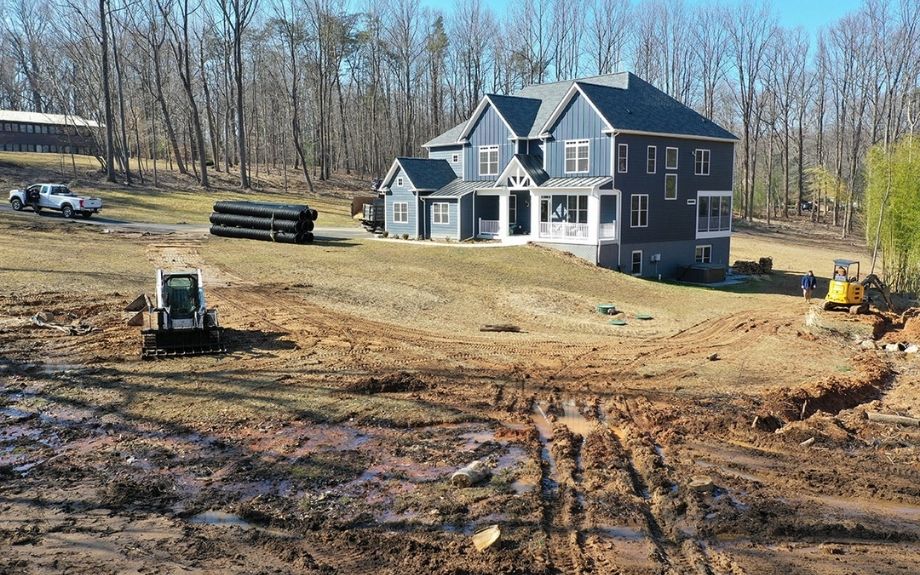
Landscaping Techniques That Prevent Flooding & Standing Water
There are several things you can do to prevent problems with standing water or flooding. A little bit of planning can make a big difference in how well your landscape functions.
Grade Soil Properly
Always grade your landscape so that water runs away from your home. If you can’t afford to do a whole landscape job at one time, have your garden graded first to avoid problems down the road.
Choose the Right Plants
If you have low spots in your garden, install species that thrive in wet conditions. Their roots will help hold the soil together and they’ll take up water as they grow.
Another benefit of choosing the right plants for the right spots is less irrigation. When plants need less irrigation, you reduce the chance of runoff.
Add Mulch
Always mulch your planting areas. In addition to keeping your soil cool and moist during hot weather, organic mulch can absorb water better than dry, compacted soil.
Install Drainage
You can guide water that’s soaked into your soil with a French drain that sends water away from your house. If needed, you can also install a fully piped system that includes a trench drain.
If you have room, install rain barrels at your downspouts. These can help lessen the chance of flooding by capturing gallons of water before they reach your landscape. As a bonus, you can use the water to irrigate during the next dry spell.
Don’t Wait to Address Drainage Problems!
Whether you’re planning a new landscape project or you have an existing landscape with wet spots, we advise homeowners to address drainage problems right away.
Poor landscape drainage can cause damage that can’t be fixed, such as the loss of mature trees. Other damage can be repaired but will be costly. It’s always better (and less expensive!) to prevent these drainage problems from starting than it is to repair them.
Call us at 703-402-9366 or use our handy online form to schedule a consultation.
Give Us a Call at 703-402-9366
If you'd like help with your trees or landscape, have any questions, or would like to schedule an appointment with one of our Certified Arborists, please give us a call. We'd love to hear from you!

